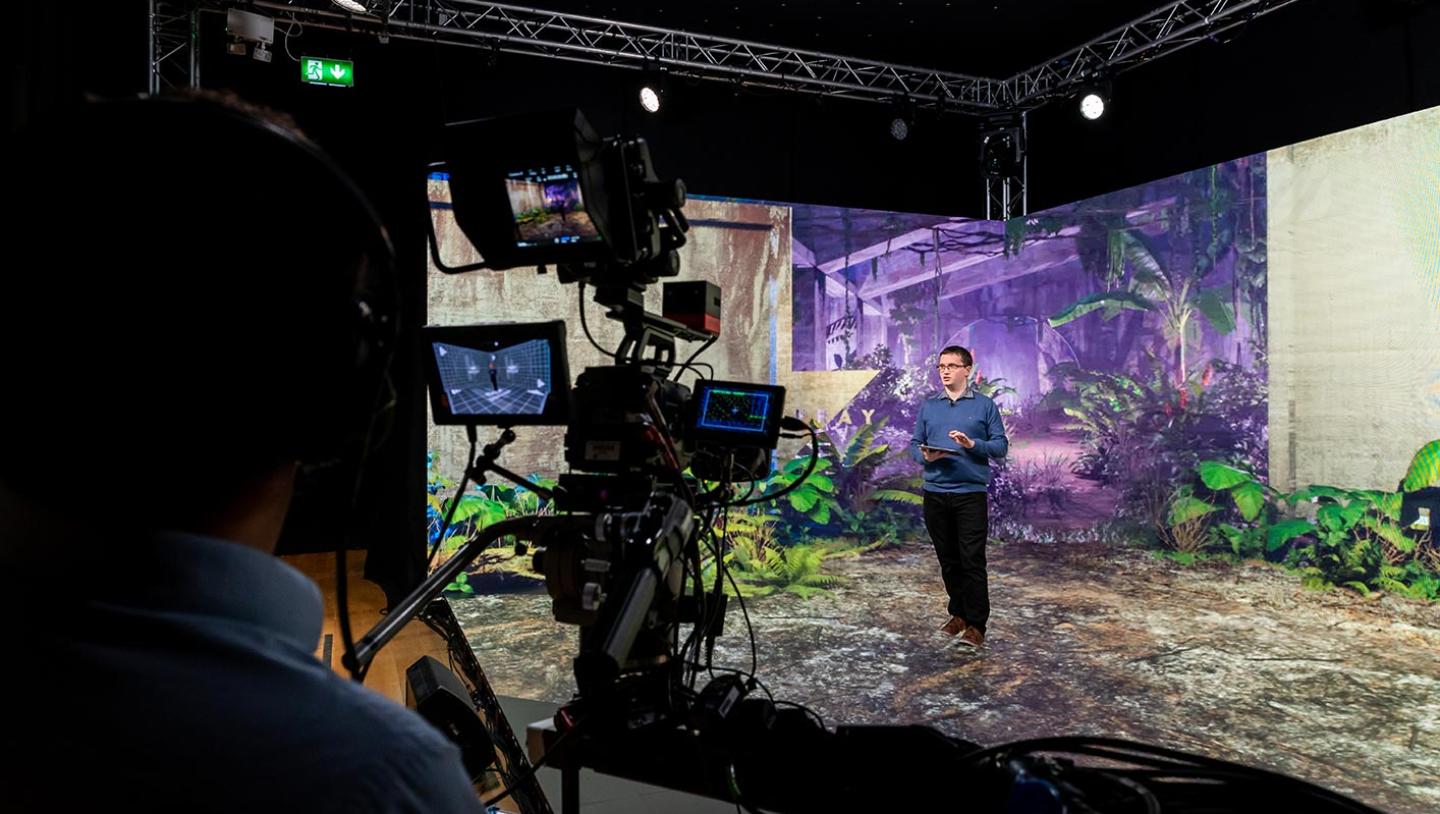Cluster rendering: Everything you need to know
Virtual Production
Workflows
Software
Disguise Platform

We explore the fundamentals of cluster rendering to help you understand how it can expand the content rendering capabilities of your next virtual, broadcast, fixed install or live event production.
With every new step in the evolution of our Disguise workflow, more opportunities are opened up for users looking to make the most of our technology. One of the most exciting features to be launched with our latest r18 software is cluster rendering - an advanced offering that significantly expands the scalability and adaptability of any production that uses an LED or similar display canvas.
This new Disguise feature developed in partnership with Epic Games allows visuals on any scale to be rendered to a higher standard than ever before. This is done by splitting Unreal Engine content into fragments that are each rendered by different Disguise machines, increasing the overall render power of your content.
Cluster rendering is a powerful boost to the potential of any production, but to get the most out of the concept, users require software that can comfortably power the process. Our new r18 software employs state-of-the-art technology to ensure anyone can make the most of the benefits that cluster rendering offers.
Find out why cluster rendering is a production game-changer

Render fragments of your vision for ultimate control
The key to cluster rendering is the breaking down of each project into smaller sections that can be rendered simultaneously across multiple Disguise rx render nodes. In effect, different machines are responsible for rendering different elements within the final visual product.
A director of photography using cluster rendering during filming on set might choose to use three rx nodes to render three different areas of the virtual production canvas - the centre being generated by one rx node, while the sides are each controlled by their own rx node.
Alternatively, they might decide that they would like to cluster different objects on the canvas. The stormy sky can be rendered by one node, the mountainous background by another, and the log cabin in the immediate foreground by a third.
Whichever way they decide to divide up the final picture, cluster rendering allows these fragments to be rendered individually, allowing you to control individual elements without impacting other areas of your set. With more flexibility, you have more opportunity to perfect your vision.
Scale out real-time content with an unlimited capacity
Rendering by fragment allows advantages beyond unparalleled control. Because different render nodes can be wholly responsible for different areas of a digital image, cluster rendering affords users access to a whole new level of scalability.
There is no limit to the size of a canvas created using cluster rendering. Simply add more render nodes to your network to expand your possible reach. Tied together using Disguise’s RenderStream protocol hosted by a Disguise vx machine, each rx node operates as part of a bigger process, allowing for a unified image that is, in reality, the product of multiple machines.
This is useful for those using large virtual production film sets and broadcasters and businesses looking to make an impact through projected visuals and those emitted using LEDs. Entire sports arenas and concert venues can be bathed in real-time content on any number of LED panels or from multiple projectors and yet still appear seamless to the viewer.

Diminished visuals are a thing of the past
While it’s been possible to create large scale visuals before, cluster rendering enables users to demand far higher quality from these images than previously possible.
The problem with scale is the burden on the processing units used to create the images. But, as cluster rendering allows large projects to be split across multiple rx machines, this means each individual machine is only given what it can handle, often with some processing power left in reserve to ensure the delivered visuals are of the highest possible quality.
The result? Photorealistic, real-time rendering that your GPU can control effortlessly. Stunning scenes can be rendered, and, regardless of their scale, cluster rendering allows every inch of those scenes to look crisp and clear to any viewer. This is particularly useful for users who need their images to look as authentic as possible - virtual production sets add no value when the video backdrop is noticeably lacking in quality. This can affect not only actors’ performances but also the look of the final film or TV production itself. When visuals matter, cluster rendering guarantees performance that will stand up to scrutiny.
A system that sweats the small stuff on your behalf
With several machines rendering different fragments of a scene all at the same time, you would be forgiven for imagining that cluster rendering results in more work. But the Disguise system is built to take the leg work out of setting up your cluster.
From configuring multiple render nodes and ensuring every image is synchronised, to content distribution and latency compensation, all is done automatically by Disguise. This means you can focus on building the visuals that suit your needs and not waste time manually setting up the system.
Cluster rendering is the next big step for those looking to create impactful visuals. Allowing users to split projections and digital canvases according to their needs, the process offers more in-depth control over every aspect of the imagery and creative approach, while allowing unlimited scalability potential.
Discover more about how you can benefit from cluster rendering in our cluster rendering ebook